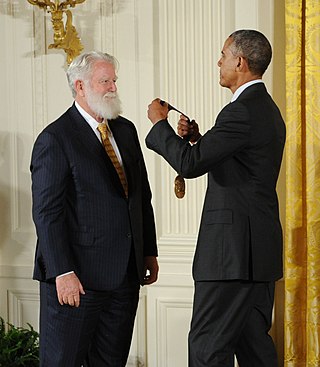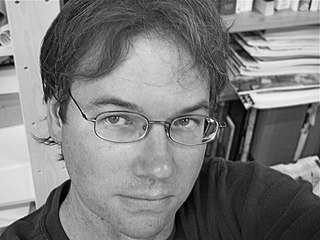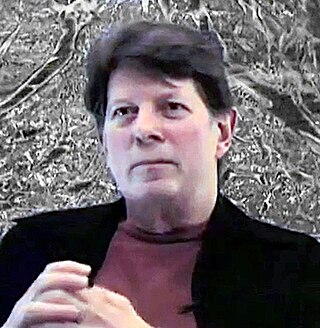Gallery
- Installation view of Wegner show "Terra Firma Incognita"
William Griffin Gallery was a contemporary art gallery located in Santa Monica, California, which operated between 1997-2011. In 2011, Griffin merged with Jim Corcoran and Maggie Kayne to create a new gallery, Kayne Griffin Corcoran. [1]
The gallery was established in 1997 by William Griffin. In 2003 the gallery relocated from Venice to a 10,000-square-foot (930 m2) space in Santa Monica. The gallery's newer space was located at 2902 Nebraska Avenue, adjacent to Olympic Blvd. The building was constructed during the aeronautics boom in the 1950s as a manufacturing plant for Douglas Aircraft and has 25-foot (7.6 m) ceilings and four distinct galleries. [2]
In addition to exhibitions, William Griffin Gallery facilitated artist projects in leading museums, foundations, universities, and galleries around the world. The gallery had helped realize public art projects with artists such as James Turrell, [3] Ai Weiwei, and Richard Long. [4] In addition, the gallery had both independently produced and directly supported the publication of numerous artist book projects, catalogs, and monographs. [5]
William Griffin Gallery featured solo exhibitions by James Turrell, Richard Long, Robert Rauschenberg, David Lynch, Ed Ruscha, Richard Serra, Tony Smith, Peter Wegner, Greg Colson, Liza Ryan and others. It had presented group exhibitions such as Early California Minimalism, a survey of significant early works by Robert Irwin, John McCracken, and Craig Kauffman; [6] and Wall Installations, with works by Maya Lin, James Turrell, Richard Long, Robert Therrien, Teresita Fernández, Karin Sander, Peter Wegner, and Kira Lynn Harris. It has also presented projects of work by Richard Tuttle, Ana Mendieta, Donald Judd and Josef Albers.

Land art, variously known as Earth art, environmental art, and Earthworks, is an art movement that emerged in the 1960s and 1970s, largely associated with Great Britain and the United States but that also includes examples from many countries. As a trend, "land art" expanded boundaries of art by the materials used and the siting of the works. The materials used were often the materials of the Earth, including the soil, rocks, vegetation, and water found on-site, and the sites of the works were often distant from population centers. Though sometimes fairly inaccessible, photo documentation was commonly brought back to the urban art gallery.

Robert Walter Irwin was an American installation artist who explored perception and the conditional in art, often through site-specific, architectural interventions that alter the physical, sensory and temporal experience of space.

James Turrell is an American artist known for his work within the Light and Space movement. He is considered the "master of light" often creating art installations that mix natural light with artificial color through openings in ceilings thereby transforming internal spaces by ever shifting and changing color.

The Museum of Contemporary Art San Diego (MCASD) is an art museum in La Jolla, a community of San Diego, California. It is focused on the collection, preservation, exhibition, and interpretation of works of art from 1950 to the present.

The Institute of Contemporary Art, Los Angeles is a contemporary art museum in Los Angeles, California, United States. As an independent and non-collecting art museum, it exhibits the work of local, national, and international contemporary artists. Until May 2015, the museum was based at the Bergamot Station Arts Center in Santa Monica, California. In May 2016, the museum announced an official name change to the Institute of Contemporary Art, Los Angeles and its relocation to Los Angeles's Downtown Arts District. The museum reopened to the public in September 2017.
Joe Goode, is an American visual artist, known for his pop art paintings. Goode made a name for himself in Los Angeles, California, through his cloud imagery and milk bottle paintings which were associated with the Pop Art movement. The artist is also closely associated with Light and Space, a West Coast art movement of the early 1960s. He resides in Los Angeles, California.

Liza Ryan is an American contemporary artist living in Los Angeles, CA. Her work is held in the collections of the J. Paul Getty Museum, Los Angeles County Museum of Art among others.

Greg Colson is an American artist known for his works and sculptures using scavenged materials.
The Rosamund Felsen Gallery is one of the longest-running art galleries in Los Angeles, California, involved in and influencing the broader American art community since its establishment in 1978. The gallery has operated four locations since its inception: first on La Cienega Boulevard in Los Angeles, then on Santa Monica Boulevard in West Hollywood, later at Bergamot Station in Santa Monica, and finally in the Arts District, Los Angeles in Downtown Los Angeles.

Light and Space denotes a loosely affiliated art movement related to op art, minimalism and geometric abstraction originating in Southern California in the 1960s and influenced by John McLaughlin. It is characterized by a focus on perceptual phenomena, such as light, volume and scale, and the use of materials such as glass, neon, fluorescent lights, resin and cast acrylic, often forming installations conditioned by the work's surroundings. Whether by directing the flow of natural light, embedding artificial light within objects or architecture, or by playing with light through the use of transparent, translucent or reflective materials, Light and Space artists make the spectator's experience of light and other sensory phenomena under specific conditions the focus of their work. From the movement's inception, artists were incorporating into their work the latest technologies of the Southern California-based engineering and aerospace industries to develop sensuous, light-filled objects. Turrell, who has spread the movement worldwide, summed up its philosophy in saying, "We eat light, drink it in through our skins."
The Baldwin Gallery is a contemporary art gallery in Aspen, Colorado established by Richard Edwards in 1994. The gallery features a variety of mainly American but also international contemporary artists and works including painting, drawing, sculpture, photography, video and installation-based work.

Modern sculpture is generally considered to have begun with the work of Auguste Rodin, who is seen as the progenitor of modern sculpture. While Rodin did not set out to rebel against the past, he created a new way of building his works. He "dissolved the hard outline of contemporary Neo-Greek academicism, and thereby created a vital synthesis of opacity and transparency, volume and void". Along with a few other artists in the late 19th century who experimented with new artistic visions in sculpture like Edgar Degas and Paul Gauguin, Rodin invented a radical new approach in the creation of sculpture. Modern sculpture, along with all modern art, "arose as part of Western society's attempt to come to terms with the urban, industrial and secular society that emerged during the nineteenth century".

Mary Corse is an American artist who lives and works in Topanga, California. Fascinated with perceptual phenomena and the idea that light itself can serve as both subject and material in art, Corse's practice can be seen as existing at a crossroads between American Abstract Expressionism and American Minimalism. She is often associated with the male-dominated Light and Space art movement of the 1960s, although her role has only been fully recognized in recent years. She is best known for her experimentation with radiant surfaces in minimalist painting, incorporating materials that reflect light such as glass microspheres. Corse initially attended University of California, Santa Barbara starting in 1963. She later moved on to study at Chouinard Art Institute, earning her B.F.A. in 1968.

Edgemar, located at 2415–2449 Main Street in Santa Monica, California, is a mixed-use shopping center designed by architect Frank Gehry that combines early 19th century warehouses, a 1940s Art Deco office building and new construction.

Jody Zellen is an American artist and educator. Her practice, consisting of digital art, painting, video art, and drawing, has been showcased by way of interactive installations, public art, and curated exhibitions. She is also known for her art criticism.
Anthony Hernandez is an American photographer who divides his time between Los Angeles, his birthplace, and Idaho. His photography has ranged from street photography to images of the built environment and other remains of civilization, particularly those discarded or abandoned elements that serve as evidence of human presence. He has spent most of his career photographing in Los Angeles and environs. "It is L.A.'s combination of beauty and brutality that has always intrigued Hernandez." La Biennale di Venezia said of Hernandez, "For the past three decades a prevalent question has troubled the photographer: how to picture the contemporary ruins of the city and the harsh impact of urban life on its less advantaged citizens?" His wife is the novelist Judith Freeman.

Thomas Kovachevich is an American contemporary visual artist and physician. Kovachevich's art practice is multi-faceted; exhibitions of paintings, sculptures, installations and performances have represented the lexicon of this artist.
Richard Alan Kayne is an American billionaire private equity investor and the majority owner of Kayne Anderson Capital Advisers, which he founded in 1984 and has $26 billion in assets under management.
Kayne Griffin is a contemporary art gallery based in Los Angeles. The gallery represents and works with artists such as James Turrell, Mary Corse, David Lynch, Tomoharu Murakami, Peter Shire, Rosha Yaghmai, Jiro Takamatsu, Anthony Hernandez, Mika Tajima, Mary Obering, Liza Ryan, Hank Willis Thomas, Llyn Foulkes and Beverly Pepper.